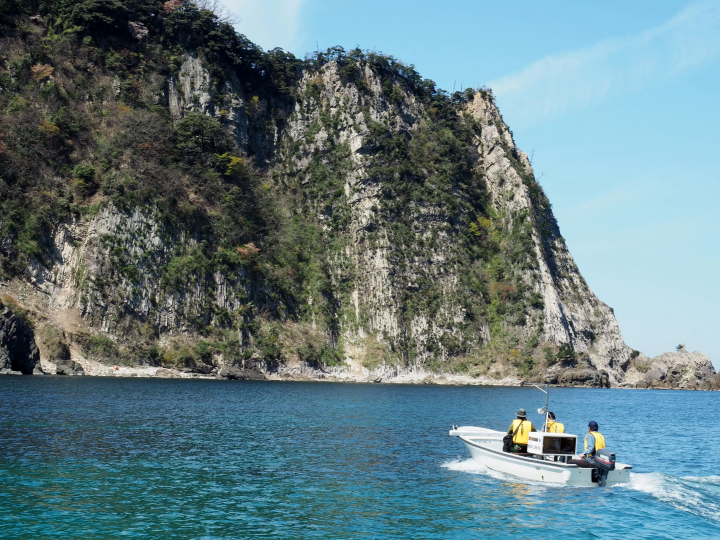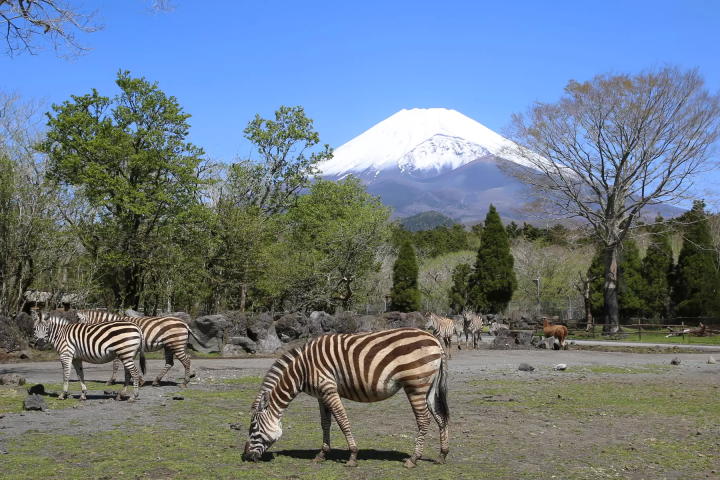A guide to Kasumi, a hidden gem in the Kansai area, just 30 minutes from Kinosaki Onsen!

Kasumi, easily accessible from Kinosaki Onsen, is a hidden gem in the Kansai region. You can enjoy UNESCO-certified San'in Coast Geopark and delicious food. In this article, we will introduce the wonderful sights, spectacular views, experiences, and cuisine we visited in this nostalgic seaside town.
-
Table of Contents
- Perfect for a day trip from Kinosaki Onsen! Kasumi with a spectacular ocean view
- 3 Best Spots to Enjoy the Spectacular View of the Sea of Japan
- Kasumi's wonderful food culture: 3 recommended gourmet dishes
- Two great spots to learn about Kasumi's history!
- Access to Kasumi
- From Kinosaki, head to the seaside town of Kasumi, Kami-cho
Perfect for a day trip from Kinosaki Onsen! Kasumi with a spectacular ocean view

Kasumi is located in an area close to the sea in Kami-cho, a seaside town that can be reached in about 30 minutes by train from Kinosaki Onsen.
Kasumi still retains the original Japanese scenery. You can forget about time and relax while enjoying the atmosphere of a historic fishing town. Even though it's your first time here, you'll feel a sense of nostalgia.

Surrounded by the majestic Sea of Japan and lush forests, Kasumi has developed beautiful scenery, a unique culture, and delicious cuisine. If you stroll through the townscape with a view of the sea, you may feel as if you have entered a painting.
We set off to explore the charms of this secluded town in Hyogo Prefecture in the Kansai region, and discovered some of the most stunning seascapes and experiences in Japan.
3 Best Spots to Enjoy the Spectacular View of the Sea of Japan
One of the greatest attractions of Kasumi is the spectacular view of Kasumi Coast.
This is part of the San'in Coast Geopark, certified by UNESCO. The varied landscapes created by the rough waves of the Sea of Japan and the winter winds attract many visitors.
This time, we visited three spots that offered particularly beautiful views.
1. Kasumi Marine Geotaxi

This is a "sea sightseeing tour" that takes you around the spectacular scenery of Kasumi Coast on a small boat. The captain, who is normally a fisherman, will guide you carefully on a maneuverable small boat.

You can dive into the cave in a small boat, see the mysterious rocks formed from solidified lava up close, and enjoy the powerful mysteries of nature.

This beautiful sculpture resembling a human profile was also created by nature. The island, called "Hawk's Nest Island," was named after the hawks that used to build their nests on the top of the island.
2. KAN-ICHI

During our stay in Kasumi, we stopped off at a particularly popular restaurant called KAN-ICHI, which overlooks the Sea of Japan and makes you feel like you've escaped to a peaceful island resort.

The restaurant has large floor-to-ceiling windows offering spectacular ocean views.
However, the stunning ocean view is not the only attraction of this restaurant. We enjoyed some amazing seafood!


The seafood bowl, which uses a generous amount of fish caught in Kasumi, is surprisingly fresh. There's a reason for this.

The owner of this restaurant has a license as a "broker" which allows him to go to the auction and purchase fish directly. He goes to the auction almost every morning and uses the best selected ingredients.
3. Okami Park

Okami Park, located on a hill overlooking the Sea of Japan, is a place full of stories.
Okami Park was originally an island called Ichikishima. As the sediment carried by the river accumulated at the river mouth, the land gradually expanded and became connected to the island. During the Edo period, it was used as a place for sailors to wait for the right moment.

This place has long been a popular photo spot. This photo was taken around 1962, and around that time, not only families but also many honeymooners came here to pledge their love to each other.

If you visit Okami Park, you should definitely stop by the cafe "Okami Kominka Kissa." You can enjoy the owner's carefully selected drink menu while looking out at the sea. According to the friendly owner, they also occasionally hold events such as exhibitions and concerts.

The sunset over the Sea of Japan seen from Okami Park became an unforgettable scene of this trip.
Kasumi's wonderful food culture: 3 recommended gourmet dishes
Surrounded by lush mountains and the Sea of Japan, Kasumi is home to an abundance of delicious ingredients and seafood. This time, we will introduce some of the best gourmet foods we came across.
1. Matsuba crab and Kasumi crab

One of the most famous local products in Kasumi is undoubtedly crab. When people in the Kansai region think of crab producing areas, Kasumi is one of the leading crab producing areas in the region, and the first name that comes to mind is Kasumi. Fresh crabs are landed at the port almost every day, except for the three-month fishing closure period from June to August.

Nishitomo Crab Market is the most famous seafood market in Kasumi. Here, you can find rows of freshly caught fish.

Live crabs wriggle around in the tanks. You can eat the crabs from Nishitomo Crab Market at the restaurant next door, Kani Yashiro Rengatei.

The popular menu item at Ramen Hakuryu, located on the seafront near the Nishitomo Crab Market, is the crab miso tantanmen, made with Kasumi crab. Once you try this ramen with its rich soup, you'll be hooked.
2. Kasumi Pear

Next on our list is the Kasumi pear, which grows on gentle mountain slopes, receiving the sea breeze from the Sea of Japan. There are 10 varieties of Kasumi pear, including "Nijisseiki," "Kosui," "Niitaka," and the newly debuted "Nashiotome," each with a different texture, sweetness, and juiciness.

Kasumi pears grow on the well-drained slopes of a mountain called "Pear Mountain," in soil fertilized with organic fertilizer made from the shells of red snow crabs caught in Kasumi. In April, Pear Mountain is covered in pure white blossoms, as if it had snowed out of season.

The harvesting period and ripeness of Kasumi pears vary depending on the variety. They are generally harvested and ripe from early August to late November, but "Atago" and "Shinyuki" varieties are in season from December to late February, as they are allowed to ripen before being shipped.

If you want to enjoy Kasumi pears in a casual setting, we recommend COMETE rice&vegetable, a cafe run by a pear farmer in front of Kasumi Station.

They sell sweets made with pears they harvested themselves. Among them, the rice flour chiffon cake kneaded with Kasumi pear compote is a healthy cake made with ingredients from Kasumi. There is an eating corner in the store, so you can eat there.
You can also buy juice and dried fruits made with Kasumi pears as souvenirs.

Renge rice balls, made with clean, clear water from a stream and grown with organic fertilizer, are a safe and secure local food that is locally produced and consumed. They are perfect to eat on the train.
3. Minister of State

The mountainous area of Kami Town, where Kasumi is located, has a large difference in temperature between day and night, and the Mikata Dainagon azuki beans grown in such soil contain more sweet sugar and umami glutamic acid than regular azuki beans. The deep, vivid color of the Mikata Dainagon azuki beans is also proof that they contain a lot of polyphenols, which are said to be good for your health.

We visited aoite.azuki.base, a small cafe where you can enjoy the taste of Mikata Dainagon to your heart's content.

This is a delicious shop that serves bean paste made from 100% Mikata Dainagon red beans. The shop is proud of the fact that they are involved in everything from growing Mikata Dainagon red beans to serving them. The inside of the shop is filled with Japanese antique accessories. Each and every one of them was fresh to our eyes.

Mikata Dainagon is a rare azuki bean that has been handed down since the Edo period. It is characterized by its beautiful ruby color, which earned it the nickname "Mikata Ruby."

Because it does not fall apart easily when boiled, it is very suitable for Japanese sweets. The signature dish, ohagi, is handmade from carefully selected azuki beans cooked by the owner. The ohagi has a strong azuki bean flavor and is very delicious, as it is full of the owner's attention to detail and kindness.
Two great spots to learn about Kasumi's history!
1. Daijoji Temple

Daijoji Temple is one of the famous places in Kasumi. All 165 sliding door paintings by Edo period painter Maruyama Okyo and his school have been designated as Important Cultural Properties, and the temple is also known as "Okyoji Temple."

It felt like I was in a Japanese art museum. The sculptures carved into the building were magnificent, and I felt like I had traveled back in time to the Edo period.

There is a large camphor tree on the grounds that is 1000 years old. The moss-covered roots tell the story of its long history.
2. Kami Town Geopark and Marine Culture Museum

If you want to learn about the rich history and culture nurtured by the Sea of Japan, we recommend the Geopark and Sea Culture Museum.

Here you can see realistic stuffed specimens of the many different creatures that live in the Sea of Japan. There are also historical exhibits such as models of "Kitamaebune" ships that traveled the Sea of Japan during the Edo period, as well as anchors.
Access to Kasumi

If you're going from Kinosaki to Kasumi, first take the JR San'in Main Line from Kinosaki Station to Kasumi Station. The journey takes about 30 minutes and costs 420 yen one way.

A convenient way to get around is by bicycle, which can be rented at the Kami Town Kasumi Tourism Association. As you leave the station, you will see a black building on your right.

Regular bicycles are available for 500 yen per day, while electric assist bicycles are available for 800 yen per day (must be returned by 5:00 p.m.).
From Kinosaki, head to the seaside town of Kasumi, Kami-cho
Kasumi has a lot to offer: breathtaking scenery, delicious local cuisine, fascinating history, rural town scenery and warm people.
If you are traveling in the Kansai region, I definitely recommend going to Kasumi. If you come to Kinosaki Onsen, it would be a waste not to go to Kasumi.
Our time in Kasumi was unforgettable! If you have the chance, please travel out west to experience the warmth, beauty and uniqueness of Kasumi.
This is a voluntary tourism organization that promotes the attractions of the northern Kinki region of Tamba, Tajima, Tango, and Wakasa. The flavors of Northern Kinki are not limited to crab, a representative winter sea delicacy, but also include oysters, yellowtail, and pufferfish, as well as cockles, rock oysters, and white squid in the summer, and mountain flavors such as Tamba chestnuts and Tamba black beans, and the summer fruit sand dune melon, making this an area where you can enjoy gourmet food all year round. I would be happy to be able to visit the vast northern Kinki region many times and share information on railroad journeys.
The contents on this page may partially contain automatic translation.





























![[Reopening in March 2026] Ikoma Sanjo Amusement Park Park, 45 minutes from Osaka , with free admission](https://resources.matcha-jp.com/resize/720x2000/2024/08/28-194409.webp)
![[Gunma] 5 recommended gourmet foods at Kawaba Denen Plaza Roadside Station!](https://resources.matcha-jp.com/resize/720x2000/2025/02/26-225970.webp)
![[Kanazawa] Enjoy the world of gold leaf to the fullest in the city with the highest production volume in Japan](https://resources.matcha-jp.com/resize/720x2000/2025/11/12-249564.webp)
![[2026] Family Winter Trip to Suzuka Circuit! – For Both Day trips and Overnight Stays!](https://resources.matcha-jp.com/resize/720x2000/2025/12/26-254097.webp)
